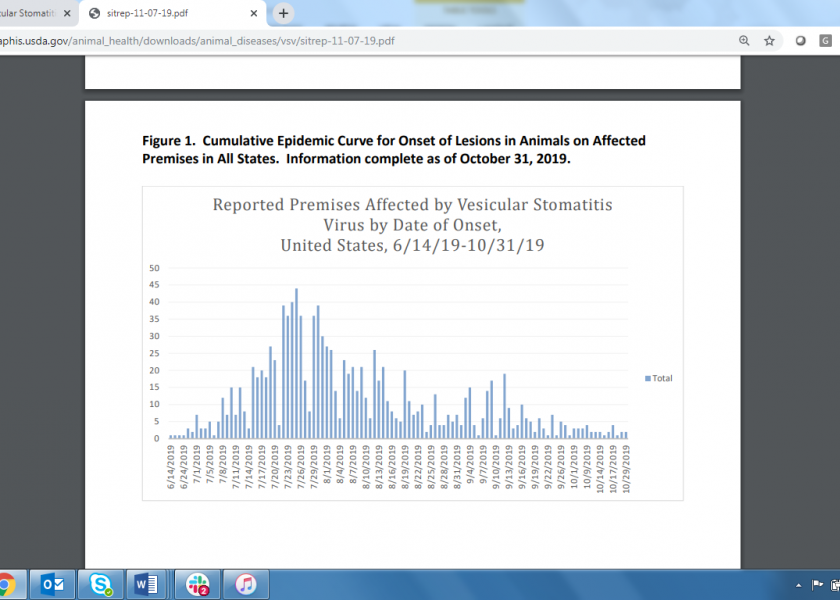Last Gasp for 2019 VSV Outbreak?

This year’s outbreak of vesicular stomatitis virus (VSV) hasn’t died out yet, but has tapered off significantly as fall weather freezes out the insect vectors associated with the disease. The latest weekly Situation Report from USDA’s Animal and Plant Health Inspection Service (APHIS) shows the disease following a typical pattern, peaking in mid-summer and declining along with insect populations as the season progresses.
Also typical for VSV, equines accounted for the vast majority of 2019 cases, with occasional cases in cattle raising concerns over the reportable disease. Without proper diagnosis, clinical signs of VSV in cattle can closely resemble those of foot and mouth disease.
The November 7 report from USDA/AHPIS shows two new confirmed VSV-positive premises in Colorado, with one of those involving a cow in Garfield County, which recently was moved from summer grazing.
The 2019 VSV outbreak began on June 21, 2019, when the National Veterinary Services Laboratories (NVSL) in Ames, Iowa confirmed the first VSV-positive premises in Kinney County, Texas. New Mexico, Colorado, Wyoming, Oklahoma, Nebraska, Utah, and Kansas subsequently broke with cases as the summer progressed. Since the start of the outbreak, 1,140 VSV-affected premises have been identified, with 469 confirmed positive and 671 suspect. Of those, 1,127 of those premises had only equine species clinically affected, while 12 premises have only affected cattle.
See the weekly VSV Situation Reports from USDA/APHIS for more information.
For more on VSV and vector-borne diseases of cattle, see these articles from BovineVetOnline:
Anaplasmosis: Not Just the South, Not Just from Ticks
Summer Brings Risk of Vesicular Stomatitis
Control External Parasites, Prevent Disease







